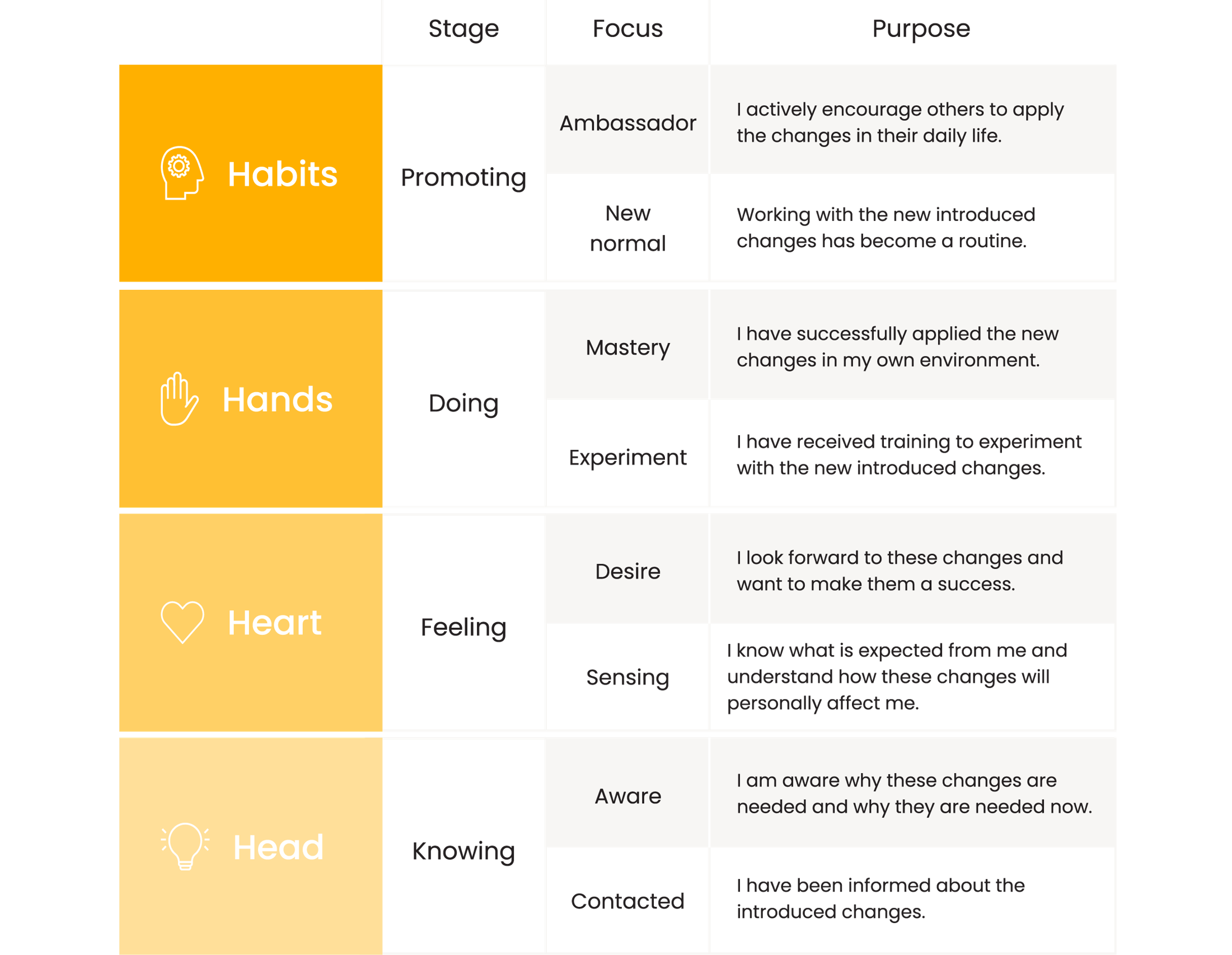
Towards change adoption with the commitment ladder
Successful changes depend on the commitment of your key employees. And you can build that engagement through a commitment ladder. This visual representation comprises four stages (to know, to feel, to do, to promote) that a person goes through during a full change process. Each stage demands two specific focal points.
Download our commitment ladder toolStages of commitment
Contact is the first encounter employees have with a change initiative that may require them to shift their mindset and/or behavior. Methods for delivering the first contact message can vary, going from memos, staff meetings, personal contact, internal social media channels and other mechanisms.
Awareness is established successfully when employees realize that modifications affecting the organization’s operations (and potentially affecting them) are possible. Ensuring the right internal audience is reached through targeted communication.
As employees learn more about the initiative and the role(s) they are likely to play, they begin to understand how it affects their work and how it touches them personally.
Next, people form intentions to support the change. They form a positive perception if the benefits of the change outweigh the costs and benefits of other alternatives, including doing nothing.
At this stage, individuals take action to test a change. This is the first time people actually experiment with the change and acquire a sense of how it might affect their work routine.
While experimentation focuses on initial, entry problems, adoption centers on in-depth, longer-term problems. Their mindset shifts from 'Can we do it?' to 'Do we want to continue it?'
Change becomes the new normal. At the last stage, people “own” the change. They demonstrate a high level of personal responsibility for its success.
They serve as advocates for the new way of operating, protect it from those who would undermine it, and expend energy to ensure its success.
Dealing with resistance
The commitment ladder will also help you to understand the nature of the resistance to the changes. It will give you a solid basis to convert this resistance using the right tools and discussions and to move people to the next rung on the ladder.
If you successfully coach your staff in the eight rungs of the ladder, your organisation will be able to deal with any change in a constructive and engaged manner.
Guide the change projects in your organisation with a proactive approach by systematically climbing all the rungs of the ladder. The result will be 100% convinced employees. That demands time and energy, but it is the best investment to ensure your changes actually pay off!
Here's how we helped Yuki to guide their clients through change and increase the commitment of their employees






